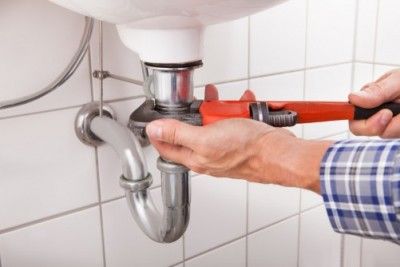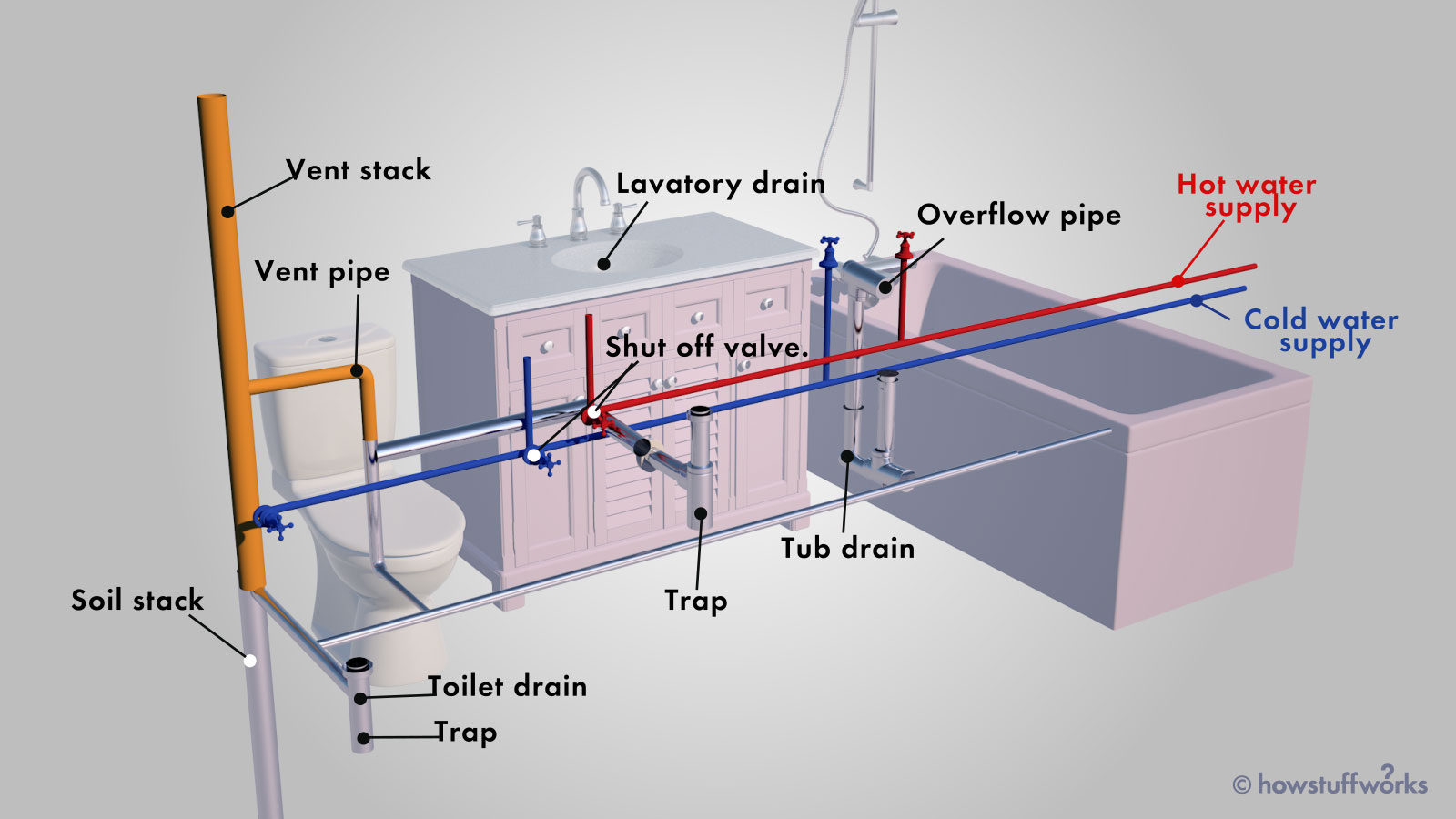The Design of Your Home's Plumbing System Explained
The Design of Your Home's Plumbing System Explained
Blog Article
What're your opinions on The Inner Workings of Your Home's Plumbing?

Recognizing just how your home's pipes system works is vital for every single homeowner. From delivering clean water for alcohol consumption, cooking, and bathing to safely eliminating wastewater, a properly maintained pipes system is critical for your family members's health and comfort. In this thorough overview, we'll explore the complex network that makes up your home's plumbing and deal tips on upkeep, upgrades, and taking care of common problems.
Introduction
Your home's plumbing system is more than simply a network of pipelines; it's a complex system that guarantees you have accessibility to tidy water and efficient wastewater removal. Understanding its parts and how they collaborate can assist you protect against costly repair services and ensure everything runs smoothly.
Basic Parts of a Pipes System
Pipelines and Tubing
At the heart of your plumbing system are the pipes and tubing that carry water throughout your home. These can be made of various products such as copper, PVC, or PEX, each with its benefits in terms of resilience and cost-effectiveness.
Components: Sinks, Toilets, Showers, and so on.
Components like sinks, bathrooms, showers, and tubs are where water is utilized in your home. Comprehending how these fixtures connect to the pipes system aids in detecting issues and preparing upgrades.
Valves and Shut-off Points
Shutoffs manage the circulation of water in your pipes system. Shut-off valves are crucial throughout emergencies or when you require to make repair services, allowing you to separate parts of the system without interrupting water circulation to the entire residence.
Water Supply System
Key Water Line
The main water line attaches your home to the community water supply or an exclusive well. It's where water enters your home and is distributed to numerous fixtures.
Water Meter and Stress Regulatory Authority
The water meter steps your water use, while a pressure regulatory authority guarantees that water moves at a risk-free stress throughout your home's plumbing system, stopping damage to pipelines and components.
Cold Water vs. Hot Water Lines
Comprehending the distinction in between cold water lines, which provide water directly from the major, and hot water lines, which bring heated water from the water heater, aids in troubleshooting and planning for upgrades.
Water drainage System
Drain Water Lines and Traps
Drain pipes bring wastewater far from sinks, showers, and toilets to the drain or septic system. Catches avoid sewage system gases from entering your home and also trap particles that could trigger obstructions.
Ventilation Pipelines
Air flow pipes enable air into the water drainage system, preventing suction that might reduce drainage and trigger catches to vacant. Proper ventilation is vital for preserving the stability of your plumbing system.
Relevance of Correct Drain
Making sure appropriate drain protects against back-ups and water damage. Frequently cleansing drains pipes and maintaining traps can stop pricey fixings and extend the life of your plumbing system.
Water Heating System
Types of Water Heaters
Hot water heater can be tankless or traditional tank-style. Tankless heaters heat water on demand, while storage tanks keep warmed water for prompt usage.
Updating Your Pipes System
Factors for Updating
Updating to water-efficient components or changing old pipelines can enhance water quality, reduce water bills, and enhance the worth of your home.
Modern Pipes Technologies and Their Benefits
Explore technologies like clever leakage detectors, water-saving bathrooms, and energy-efficient water heaters that can save cash and minimize environmental influence.
Price Factors To Consider and ROI
Compute the in advance expenses versus lasting savings when considering plumbing upgrades. Numerous upgrades spend for themselves via decreased utility costs and less repair work.
Just How Water Heaters Link to the Pipes System
Understanding just how water heaters link to both the cold water supply and hot water distribution lines assists in detecting issues like insufficient hot water or leaks.
Maintenance Tips for Water Heaters
Regularly purging your hot water heater to get rid of sediment, examining the temperature setups, and inspecting for leaks can expand its lifespan and enhance power efficiency.
Usual Pipes Issues
Leakages and Their Reasons
Leaks can happen as a result of maturing pipes, loose fittings, or high water stress. Addressing leaks immediately prevents water damage and mold and mildew development.
Clogs and Clogs
Clogs in drains pipes and toilets are commonly brought on by flushing non-flushable products or a build-up of oil and hair. Making use of drain screens and being mindful of what decreases your drains pipes can avoid obstructions.
Signs of Plumbing Troubles to Watch For
Low tide stress, slow drains pipes, foul odors, or unusually high water bills are indications of potential pipes troubles that ought to be attended to immediately.
Plumbing Maintenance Tips
Routine Examinations and Checks
Schedule yearly pipes inspections to catch issues early. Try to find indicators of leakages, corrosion, or mineral build-up in taps and showerheads.
Do It Yourself Maintenance Tasks
Easy jobs like cleansing faucet aerators, checking for bathroom leakages making use of dye tablet computers, or shielding revealed pipelines in cold environments can protect against major plumbing problems.
When to Call an Expert Plumbing Professional
Know when a plumbing issue requires expert know-how. Trying complex repairs without proper understanding can bring about even more damage and greater fixing prices.
Tips for Lowering Water Usage
Basic routines like dealing with leakages without delay, taking much shorter showers, and running complete lots of washing and meals can conserve water and lower your utility bills.
Eco-Friendly Plumbing Options
Take into consideration lasting pipes materials like bamboo for flooring, which is durable and environment-friendly, or recycled glass for countertops.
Emergency Preparedness
Steps to Take Throughout a Pipes Emergency situation
Know where your shut-off valves lie and exactly how to shut off the supply of water in case of a burst pipe or significant leakage.
Importance of Having Emergency Calls Convenient
Maintain call info for regional plumbing technicians or emergency solutions conveniently offered for quick feedback throughout a pipes dilemma.
Ecological Influence and Preservation
Water-Saving Fixtures and Appliances
Mounting low-flow taps, showerheads, and bathrooms can considerably reduce water use without compromising performance.
Do It Yourself Emergency Situation Fixes (When Applicable).
Temporary solutions like utilizing duct tape to spot a leaking pipeline or putting a bucket under a dripping tap can reduce damages up until a professional plumber gets here.
Final thought.
Recognizing the composition of your home's pipes system equips you to maintain it properly, saving time and money on repairs. By complying with regular upkeep regimens and staying notified about modern-day plumbing technologies, you can guarantee your plumbing system runs successfully for many years ahead.
Exploring Your Homes Plumbing Anatomy
Water Supply System
Main Water Line: This is where water enters your home from the municipal supply or a private well. Water Meter: Typically located near where the main water line enters the property, it measures the amount of water used. Shutoff Valve: It s crucial to know where this is in case of emergencies. It allows you to turn off the water supply to the entire house. Pipes and Fittings: These distribute water throughout your home. Materials can include copper, PVC, or PEX. Drain-Waste-Vent (DWV) System
Drains: Located in sinks, showers, and tubs, these carry wastewater away. Traps: U-shaped pipes under sinks that hold standing water, blocking sewer gases from entering the home. Vents: Pipes that lead from the DWV system to the outside, preventing vacuum formation and allowing gases to escape. Sewer Line: Carries all wastewater from the home to the municipal sewer system or a septic tank. Fixtures and Appliances
Sinks, Toilets, and Showers Dishwashers and Washing Machines Water Heaters Maintenance Tips
Regularly check for leaks in exposed pipes and around fixtures. Inspect the water heater annually for signs of wear. Clean drains and traps to prevent clogs and odors. Know how to shut off water to individual fixtures. When to Call a Professional
Major leaks or burst pipes Installation of new pipes or fixtures Septic tank issues Remodeling projects that involve plumbing changes Conclusion
Understanding the anatomy of your home's plumbing is key to maintaining a functional and efficient system. Regular checks and knowing when to call in the experts can save you time, money, and stress.
https://www.mavyn.com/blog/exploring-your-homes-plumbing-anatomy

Do you appreciate reading up on Understanding Your Home's Plumbing Anatomy? Try to leave feedback further down. We would be glad to see your thoughts about this write-up. We hope to see you back again soon. Sharing is caring. Helping people is fun. I treasure reading our article about .
Schedule Report this page